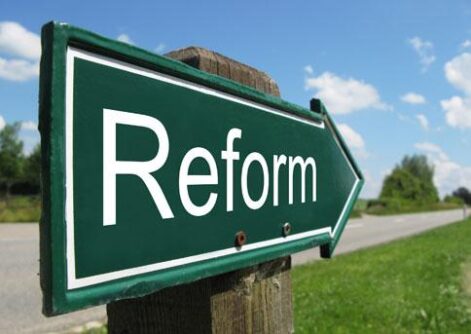This article, republished with permission, originally appeared in The Chronicle of Philanthropy on December 13, 2022.
With Democratic Senator Rafael Warnock’s victory last week, another contentious Georgia Senate race is over, and with it, the attention focused on nonprofits for their role in registering, educating, and mobilizing voters and monitoring the fairness of the electoral process.
Millions of dollars flowed into the state over the past year, and much of it went to nonprofit groups. This outpouring of support may have ensured a robust turnout in both the November general election and last week’s runoff, but it also raises serious questions about the increasingly blurred boundary between charitable and political giving. Of particular concern is donors’ ability to transfer money to 501(c)(4) organizations from other tax-exempt groups — and, in the process, avoid paying capital-gains taxes on the gift.
In the past two decades, election-related activities have become increasingly common in the nonprofit world, with millions of dollars going directly to 501(c)(3) groups — organizations that can’t do much lobbying — and 501(c)(4) organizations, which can pursue more advocacy.
Foundations have given more than $2 billion to activities focused on elections since 2011, according to data compiled by Candid, an independent research group. Very wealthy donors often donate appreciated assets, such as stock, thereby avoiding capital-gains taxes. If the recipient is a 501(c)(3), they also receive a charitable deduction.
These contributions are undoubtedly legal, but they also stretch and bend the core framework separating charity and politics.
The Tax Reform Act of 1969 was the most significant attempt to draw a distinction between the charitable and political spheres. It put restrictions on the lobbying and electoral activities of organizations that wanted to offer donors a charitable tax deduction. The law specified very different treatment for (c)(4)s, which could engage in a wide range of activities related to lobbying and elections but are prohibited from giving money to campaigns. Contributions to these entities were not tax deductible, but that didn’t mean they couldn’t have significant value for wealthy donors.
The recent megadonations by Patagonia founder Yvon Chouinard and electronics magnate Barre Seid show how this aspect of the law can work to a donor’s benefit. Chouinard gave nearly $3 billion in his company’s stock to a (c)(4) climate-policy advocacy group, and Seid made a $1.6 billion stock contribution to a politically focused conservative organization. Neither donor received charitable deductions, but both enhanced their politically motivated donations by avoiding federal capital-gains taxes.
A New York University law professor, Daniel Hemel, put it bluntly in an interview with the publication Quartz: “In both situations two corporate owners gave away their companies to 501(c)(4)s in order to avoid taxes and use the money for political causes.”
Following enactment of the 1969 tax law, donors were cautious about supporting nonprofits that engaged in activities related to elections, fearing such activity would anger Congress and ignite calls for even more stringent regulations. But in the 1980s, this arrangement began to unravel as donors and advocacy nonprofits began to test the boundary between (c)(3) organizations and political activity.
Power struggle
This willingness to test the system was driven in part by the potential electoral influence of Black, Latino, youth, and other demographic groups with historically lower election-participation rates. While the Tax Reform Act was motivated by a desire to keep partisan politics out of the charitable field, it was also promoted by politicians worried about the rising political power of minority groups following passage of the Voting Rights Act of 1968. By the 1990s, it was common for the Tax Reform Act to be described as inspired by racism. Hence, stretching its limits was considered morally justified.
At the same time, (c)(3)s started to ally themselves with (c)(4) groups. The 1969 tax law had several elements that made it possible for (c)(3)s to transfer funds to (c)(4)s if the use of the money was consistent with the donor’s charitable mission. Similarly, foundations and donor-advised funds were also allowed to support (c)(4)s as long they required additional reporting to the IRS confirming the charitable use of the resources. Through these avenues, donors could receive charitable tax benefits and support the political and lobbying work of a (c)(4).
Media investigations have documented the growth and influence of for-profit groups, such as Arabella Advisors, which sponsor and support several (c)(3) and (c)(4) organizations. While the transformation of tax-deductible money into politically charged cash occurs across the political spectrum, recent elections have seen more such funds pouring into left-leaning groups. A New York Times analysis found that 15 of the most politically active Democratic-aligned nonprofits spent more than $1.5 billion in 2020 compared with about $900 million spent by 15 of the most politically active Republican-aligned groups.
Some of this money undoubtedly went straight to (c)(4) organizations and did not generate tax deductions for the donors even if they may have avoided paying capital gains on appreciated assets. However, it is safe to assume that a significant portion of this $2.4 billion went to (c)(3) groups initially. For example, in 2021, the New Venture Fund, a (c)(3) that provides fiscal sponsorship to nonprofits, gave more than $27 million to the progressive policy group Sixteen Thirty Fund, a (c)(4).
Georgia has become a microcosm of this larger trend toward conflating charitable money and political goals. Nonprofits in the state received millions of dollars for voter registration, education, mobilization, and election-related legal services. The Southern Poverty Law Center pledged $100 million to the Community Foundation of Greater Atlanta for voter registration and mobilization projects in the deep south, at least $2.9 million of which went to Georgia groups in 2021. It’s difficult, at this point, to calculate how much ultimately went to (c)(3) and (c)(4) organizations working in Georgia this year, but the significance and effectiveness of election-related funding in the state is clear.
Thanks at least in part to the work of nonprofits, 1.6 million new voters registered in Georgia in the past four years. Many came from populations with historically low electoral-participation rates — groups that have recently been the target of voter-suppression tactics. For advocates, this fact might justify a less strict line between charity and politics.
But the notion that the ends justify the means is risky to the nonprofit field and the nation’s political process. Conservative donors have long shied away from voter registration and mobilization work, but that attitude is changing, and several new ventures explicitly modeled after Arabella Advisors are taking shape. Liberal groups have a money advantage now, but a political arms race could ensue if an Elon Musk or a Peter Thiel decided to contribute $5 billion to conservative nonprofit organizations with the aim of galvanizing underrepresented voters on the right.
It’s fair to ask whether the nation’s overfinanced politics really needs more money flowing into the nooks and crannies of the nonprofit world? What are the consequences for the field’s legitimacy if a small but lavishly funded segment is in the public eye for participating in activities most would consider partisan? One new senator, J.D. Vance of Ohio, has taken aim at big foundations. It wouldn’t be a stretch for him to expand his interests into other parts of the nonprofit world.
How to reduce risks
Two modest steps could reduce these risks. First, foundations, DAFs, and (c)(3)s should be prohibited from funding (c)(4)s. The justification for allowing this was always suspect, and ending the practice would not prevent voter registration and related (c)(3) organizations from continuing their legitimate and important work.
Second, donations to (c)(4)s should be in cash. Donors, such as Barre Seid and Yvon Chouinard, could still make major gifts to these groups, but they would have to pay the capital-gains tax on their appreciated stock. The justification for allowing this sort of tax avoidance in the case of (c)(3)s is that the contribution serves the common good. It’s hard to make that argument when the funds are going to highly partisan (c)(4)s.
The value of full participation in elections is clear. The nation’s democracy is stronger because of the hard work of so many organizations to register underrepresented voters. But a few simple changes would ensure this work can continue without raising questions about its partisan nature or promoting an escalation of partisan money in elections.





